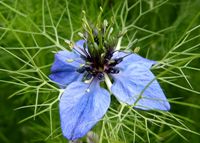Classification
Domain-EukaryaKingdom-Plantae
Phylum- Anthophyta
Class-Magnoliopsida
Order- Ranunculales
Family- Ranunculaceae
Genus- Aquilegia
Species- Aquilegia Vulgaris © Ragesoss, Wikicommons
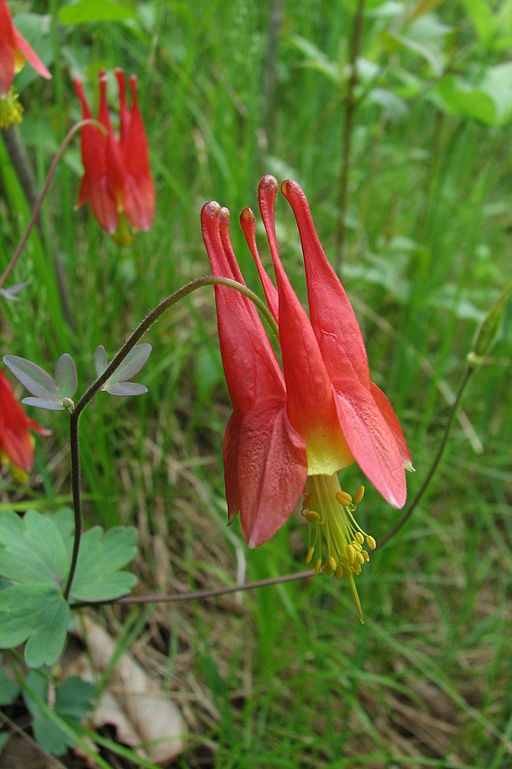
Eukarya- is one of the three domains of organisms. This
classification includes many organisms, both single celled and
multi-celled organisms. All Eukaryotic cells posses a true
nucleus and membrane bound organelles. The Eukarya are
considered the most complex of the three domains. This domain
covers a wide variety of organisms including
animals,
plants, and
fungi.
Plantae- Is a kingdom or organisms closely related to green
algae and has
4 differences from the algae it derived from. They
have alternation of generations are multi-cellular, walled
spores are prodced in sporangia, multicellular gametangia, and
apical meristems. A majority of organisms under this kingdom are
autotrophic. Pretty much any plant that comes to mind falls under
this kingdom. Some examples of organisms that fall under plantae are
Ginger,
Pomegranates, and
Black Pepper.
 Magnoliopsida- also known as a Diocotledon, which have two
cotyledons, flower parts
Magnoliopsida- also known as a Diocotledon, which have two
cotyledons, flower parts
©
come in four or five, vascular bundles
are in circles, has secondary growth, and reticulated leaf
veins. They are often compared to monocots which mean they only
have one cotyledon, flowering parts come in multiples of three, and
have parallel leaf veins. Flowers lead to fruit so many common foods
that you find on your table fall under this classification such as
the
papaya or the
sweet orange. It also includes garden flowers such as the
purple passion flower.
© Ulf Eliasson, Wikicommons
©Elf, Wikicommons
Ranunculales- an order of the magnoliopsida that belong to the
phyletic group
basal eudicots. This order is the most basal clade in this group
and is commonly related to the buttercup. This order classifies
seven other families. A example of an organism that falls under this
order is the
Curare.
Ranunculaceae- usually have sepals in place of petals, have
leaves that are heart shaped or undivided and narrow and nonwoody
tissue. The flowers are often made up of 5 colorful sepals and
come in many shapes.
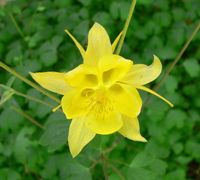 Stan
Schebs, Wikicommons
Stan
Schebs, WikicommonsAquilegia- is a genus that holds about 60 species and also known as columbine. The word’s Latin origin means eagle because the petals look like eagle claws. All of these plants are poisonous, do not be deceived by their bright colors or pretty design.
Aquilegia Vulgaris- This flowering
plant is beautiful but deadly. Vulgaris means ordinary or common
which is a good name because one of the common names of this
plant is the common columbine. This plant is a herbaceous
perennial plant and come in many different colors ranging from
purple, pink, blue, and white.
Classifications
The picture to the right shows where Aquilegia Vulgaris
falls under t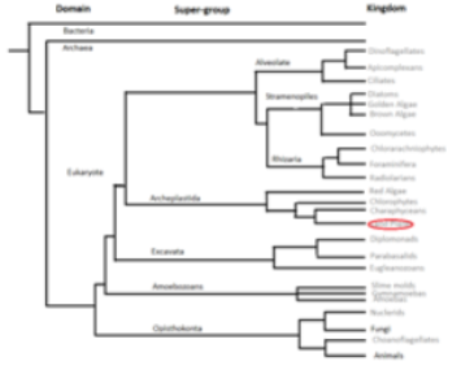 he
broad spectrum of eukaryotes. The picture is ranging from the
largest classification to kingdoms. Columbine falls under the domain
Eukaryote and the super group Archaeplastida. Land plants is circled
in red and is closely related to the charaphyceans.
he
broad spectrum of eukaryotes. The picture is ranging from the
largest classification to kingdoms. Columbine falls under the domain
Eukaryote and the super group Archaeplastida. Land plants is circled
in red and is closely related to the charaphyceans.
The plants are closely related to a green algae in the same super
group.
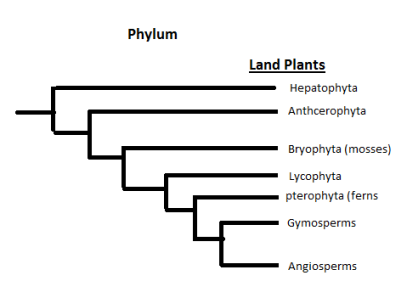
The picture to the left shows where in relation to other plants Aquilegia Vulgaris falls. The organism is under Angiosperms and is closely related to the Gymnosperms.
To learn more about habitat click here
_02.jpg)
